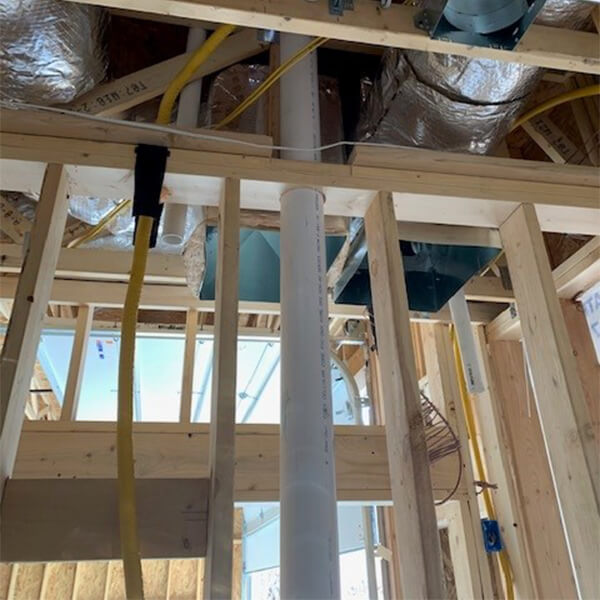But how do you determine which system is right for your property? While exterior systems are more prevalent than interior systems, it’s important to consider the benefits and drawbacks of each before making a decision.
Exterior Radon Mitigation Systems
Exterior radon mitigation systems are the most prevalent systems we see installed and are a smart choice for protecting your property from radon gas in unobtrusive way. As the name implies, this type of system is installed on the outside of the home or building, with the main suction point located in the basement, crawl space, or lowest level of the property. The pressurizing components, such as the fan, are also located on the exterior of the property.
Most home and business owners choose an external option for radon mitigation due to its simplicity in installation and ease of servicing. Unlike an interior system, an exterior radon mitigation system is less invasive and can be installed without disrupting living spaces or intricate ventilation systems like those in hospitals or schools. Additionally, they don’t cause noise or drafts inside the home, which can be a concern with interior systems. While exterior systems may not be as aesthetically pleasing, they offer practical and effective benefits for protecting your property from radon gas.
Interior Radon Mitigation Systems
Interior radon mitigation systems are a popular choice among homeowners who are concerned about the appearance of an external system. With these systems, the pipes carrying the radon gas from the suction point are routed up through your home and out your roof. The main benefit of an internal system is that it is more aesthetically pleasing, as there are no exposed pipes on the outside of the home. The pipes simply exit through a small hole in the roof. However, internal systems come with several drawbacks.
First, interior radon mitigation systems require more work to install, making them more time consuming and costly. Pipes must be routed through the home, which can mean going through living spaces which can be both obtrusive and—due to their design—result in restricted airflow, decreasing the system’s efficiency. Furthermore, due to the somewhat invasive nature of interior radon mitigation systems, they are typically best suited for single family homes and, per AARST’s standards, are not ideal for multifamily or large commercial properties.
Professional Radon Mitigation
When choosing a radon mitigation system for your property, there are pros and cons to both interior and exterior systems. However, beyond the systems themselves, there are numerous other external factors that will potentially limit the options you have available, such as building codes and various city/county regulations.
To ensure you make the best decision for your property, it’s always best to seek the advice of professionals at Southwest Radon Eliminators! Our NRPP licensed and certified radon measurement professionals will help you determine which system will most seamlessly integrate into your property while effectively protecting your home or business from radon!
